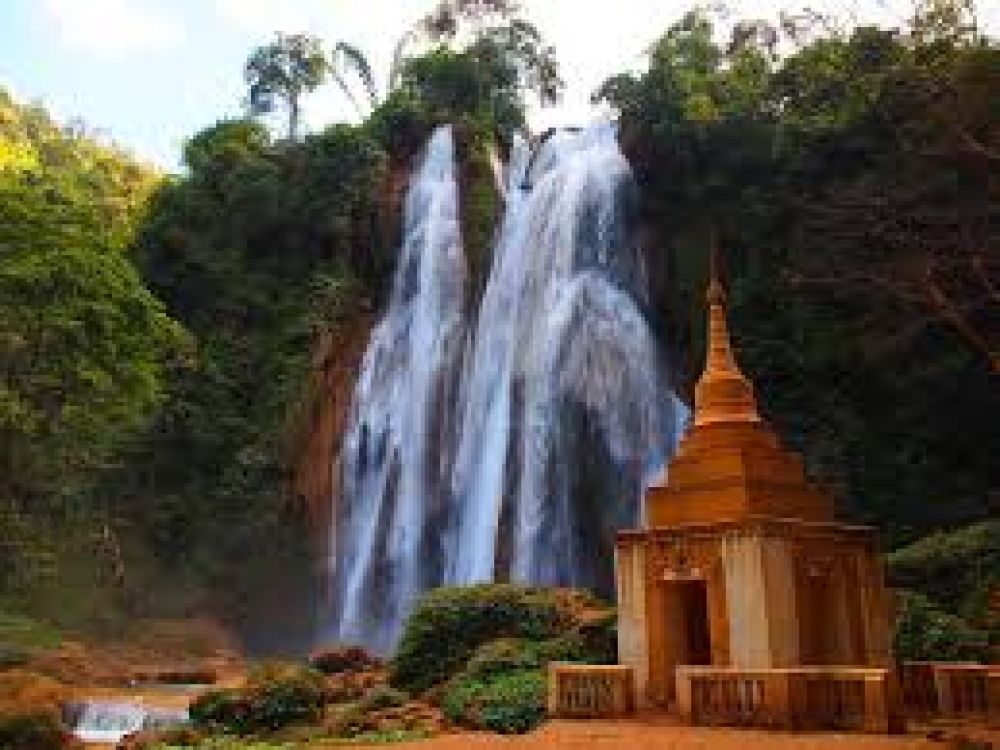

Anisakan Falls, located near the town of Pyin Oo Lwin in Myanmar (Burma), is a breathtaking natural wonder that has been attracting visitors for many years. The tourism history of Pyin Oo Lwin, and particularly Anisakan Falls, is intertwined with the colonial legacy and the region’s natural beauty.
In the days of the British colonial era, Pyin Oo Lwin, then known as Maymyo, served as a summer retreat for British officials seeking respite from the heat of the Myanmar plains. Its cool climate and serene atmosphere made it ideal for rest and relaxation. The establishment of colonial bungalows and botanical gardens helped to shape its early tourism sector. Post-independence, Pyin Oo Lwin continued to flourish as a local getaway spot.
Anisakan Falls has historically been less well-known compared to other sites in Myanmar, lending it a more untouched and serene feel. The waterfall is part of a scenic area set amidst lush greenery. Its clear waters cascade down into a tranquil pool, making it a picturesque spot for visitors. The falls are approximately 120 meters high and are surrounded by a range of hiking trails, providing the dual experience of an outdoor adventure and a peaceful nature retreat.
With the increase in global travel and the easing of restrictions in Myanmar during the early 21st century, Anisakan Falls and Pyin Oo Lwin began to receive more international attention. Travelers seeking unique experiences away from crowded tourist hotspots found the falls both accessible and rewarding. The idyllic nature of the falls, with opportunities for hiking and picnicking, has seen a steady growth in visitor numbers.
In recent years, sustainable and ecological tourism has become an important focus in areas like Anisakan. Efforts have been made to preserve the natural beauty of the falls while accommodating an increasing number of tourists. Additionally, there has been a trend towards experience-based travel, with visitors seeking personalized interactions with local culture and nature. Anisakan Falls offers this with its walking trails, local guides, and proximity to the charming town of Pyin Oo Lwin, known for its blend of colonial architecture and colorful markets.
While tourism brings economic benefits to the region, it also presents challenges such as environmental preservation and cultural impact. There is an ongoing conversation among stakeholders to ensure that tourism growth does not come at the cost of the falls' natural beauty or the well-being of the local community.
For those planning a visit, the best time is during the dry season, from November to May, when the paths are more accessible. The hike to the falls can be steep and slippery, so appropriate footwear is advised. Local guides are usually available to accompany visitors, offering insights into the area’s history and flora.
Anisakan Falls in Pyin Oo Lwin remains one of Myanmar's hidden treasures in tourism. Its history as a colonial retreat has paved the way for its current status as an eco-tourism destination. With a focus on sustainability and authentic experiences, the falls continue to enchant visitors with their natural splendor and rich cultural backdrop.